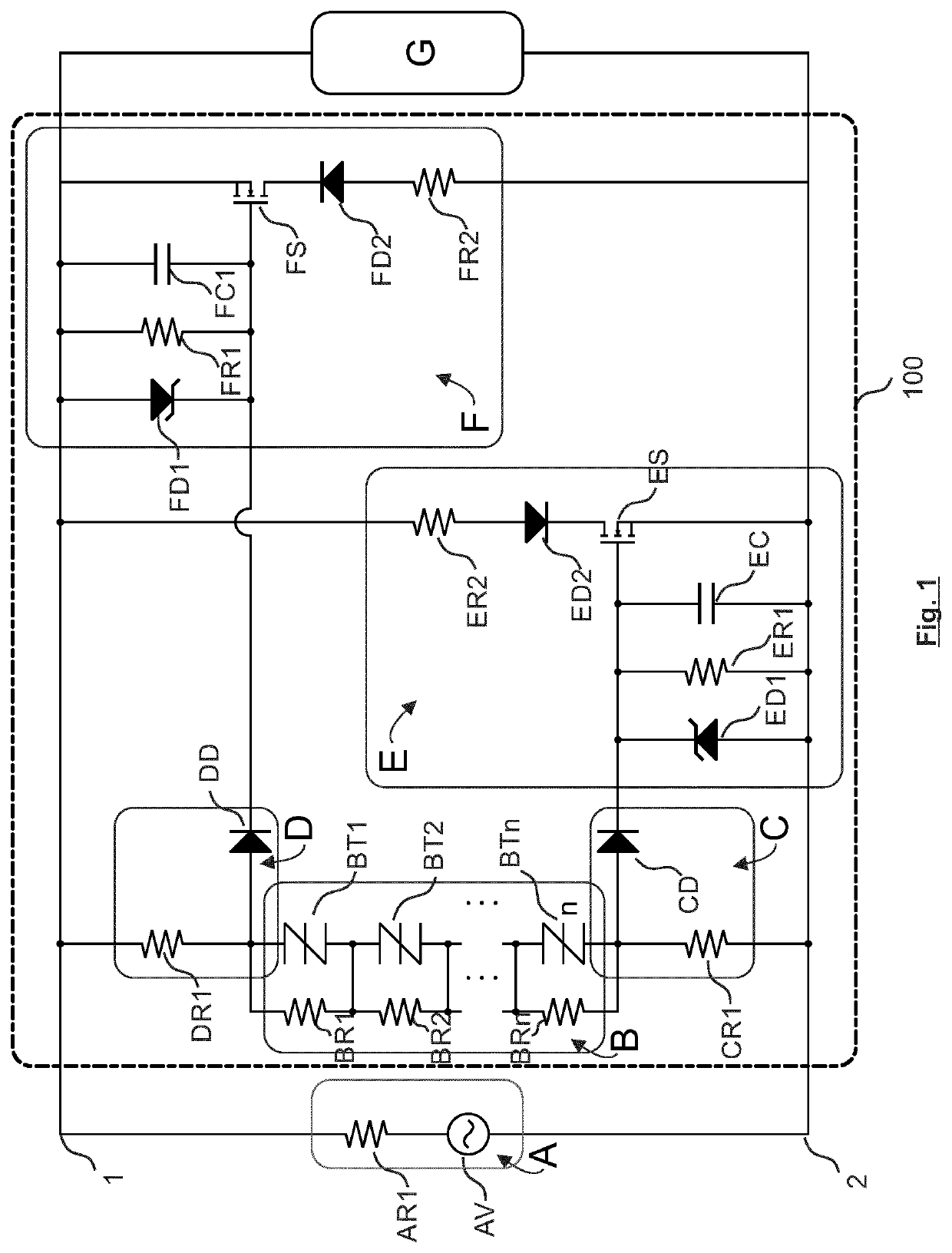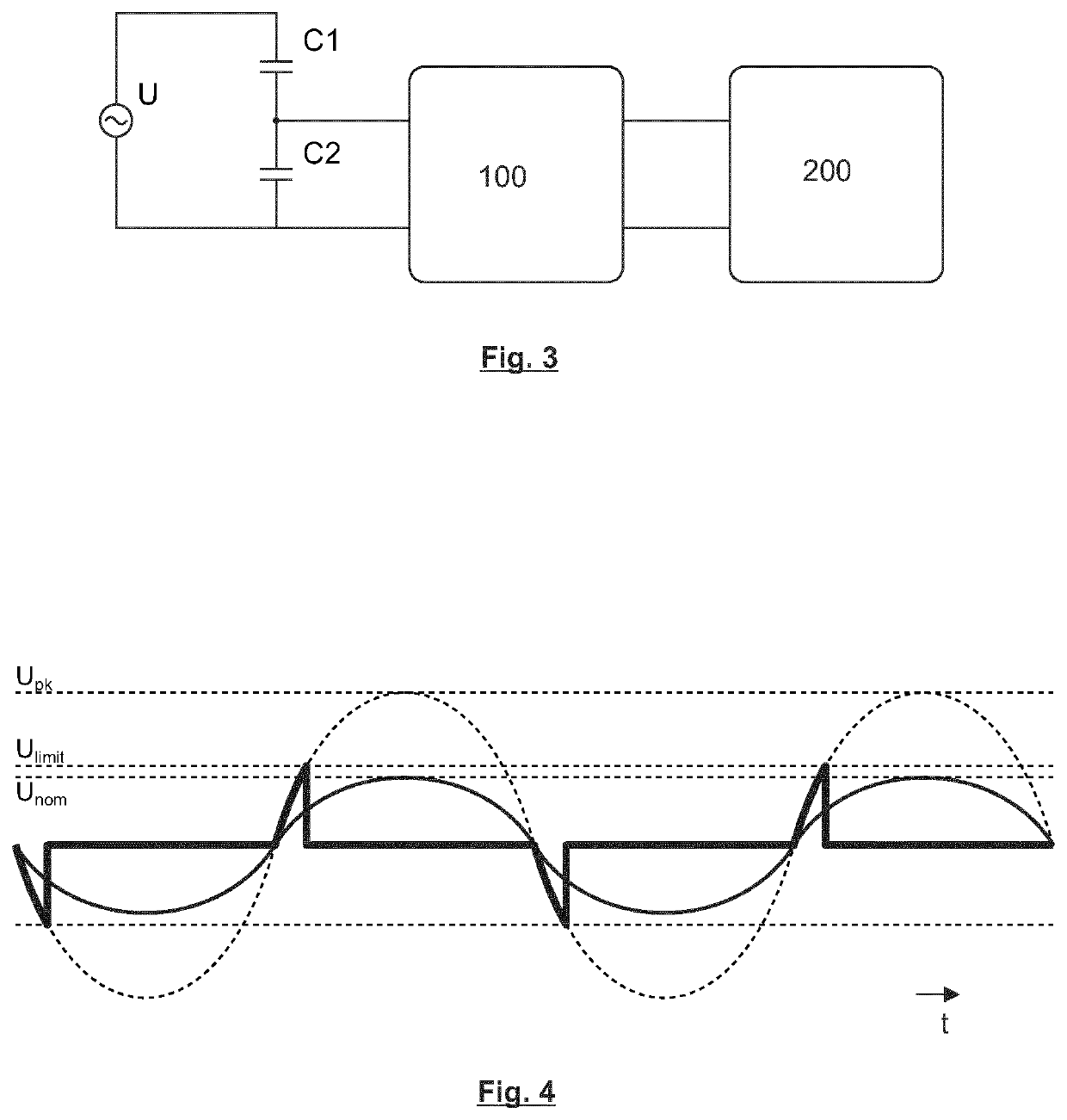Crowbar device and multistage crowbar apparatus
a multi-stage, crowbar technology, applied in the direction of electrical devices, switches operated by abnormal voltage/current products/phase angles, electrical apparatus, etc., can solve the problems of permanent overvoltage, small losses, and overvoltage on the high-voltage bushing
- Summary
- Abstract
- Description
- Claims
- Application Information
AI Technical Summary
Benefits of technology
Problems solved by technology
Method used
Image
Examples
Embodiment Construction
[0037]The embodiments described below with reference to the accompanying drawings are illustrative in every aspect and may be combined with one another and / or modified and / or abbreviated and / or omitted as appropriate.
[0038]FIGS. 1 and 2 each illustrate a circuit diagram showing an exemplary configuration of a crowbar device according to an embodiment of the disclosure.
[0039]FIG. 3 shows an exemplary configuration of a high impedance voltage source U having a crowbar device 100 and an equipment 200 connected thereto. The voltage source U corresponds to the voltage source AV in FIGS. 1 and 2. In FIG. 3, the capacitors C1 and C2 illustrate the high impedance properties of the voltage source U. For example, the voltage source U has a capacitance C2 between signal and ground. The overvoltage protection circuit, or crowbar device 100, is connected between the terminals of capacitance C2. In case of operation of the crowbar device, it discharges the capacitance C2 between signal and ground...
PUM
 Login to view more
Login to view more Abstract
Description
Claims
Application Information
 Login to view more
Login to view more - R&D Engineer
- R&D Manager
- IP Professional
- Industry Leading Data Capabilities
- Powerful AI technology
- Patent DNA Extraction
Browse by: Latest US Patents, China's latest patents, Technical Efficacy Thesaurus, Application Domain, Technology Topic.
© 2024 PatSnap. All rights reserved.Legal|Privacy policy|Modern Slavery Act Transparency Statement|Sitemap



